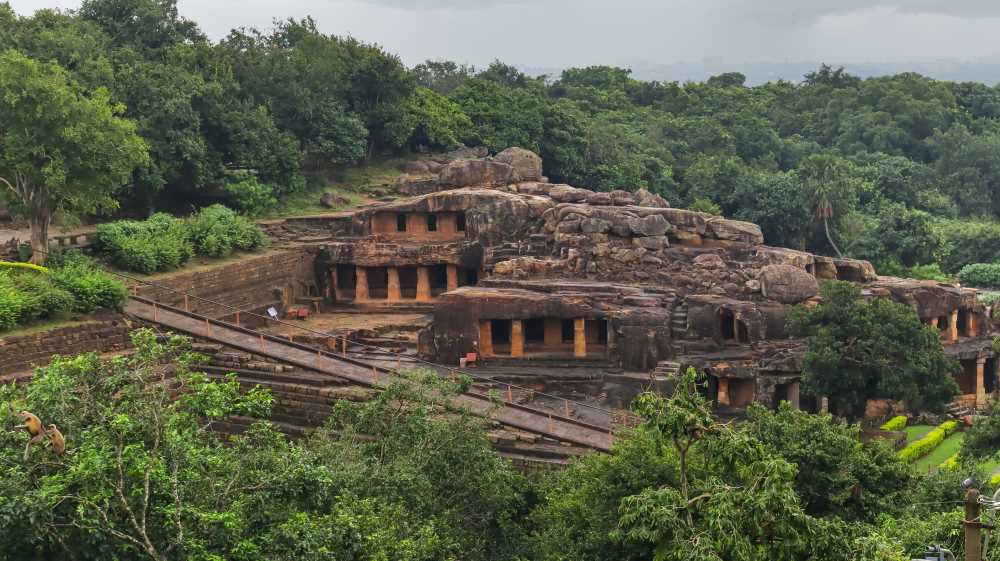Khandagiri and Udayagiri Caves, located on twin hills near Bhubaneswar, are among Odisha’s most popular historical and archaeological sites. These ancient rock-cut caves are a testament to the architectural brilliance and cultural richness of the Jain heritage. As some of the earliest examples of Jain rock-cut architecture in India, they hold immense historical and spiritual significance.
Here’s everything you need to know about exploring the Khandagiri and Udayagiri caves.
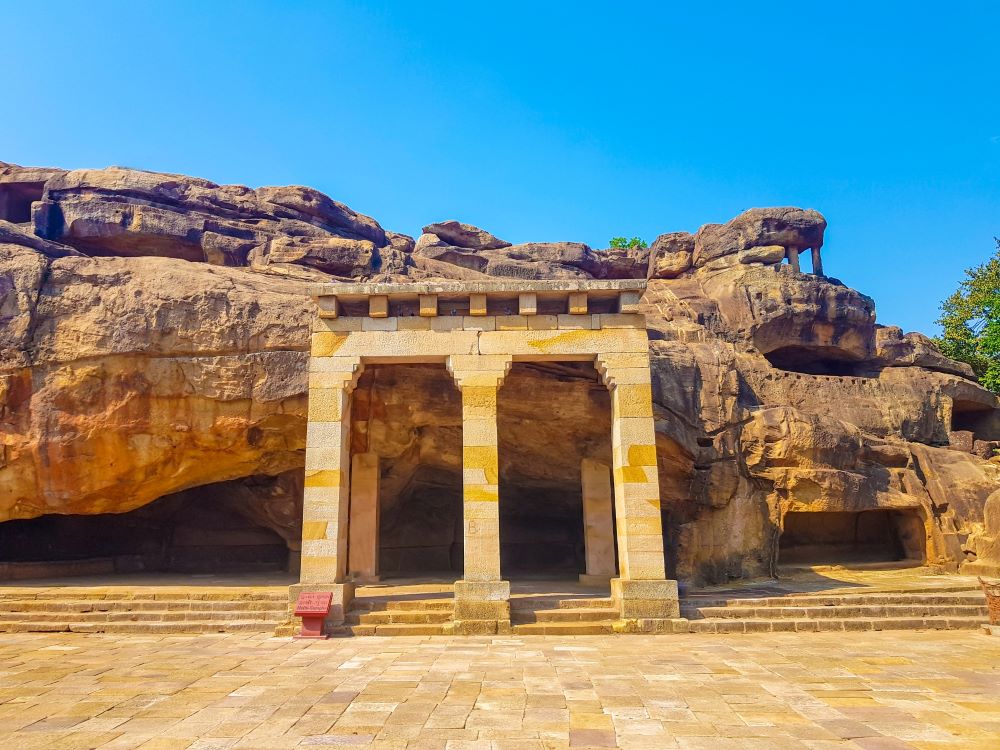
History of Khandagiri and Udayagiri Caves
The caves date back to the 2nd century BCE and were carved during the reign of King Kharavela of the Mahameghavahana dynasty. They served as residential quarters for Jain monks and were designed as retreats for meditation and spiritual practices. The inscriptions in the caves, especially the Hathigumpha inscription on Udayagiri, provide valuable insights into King Kharavela’s conquests, achievements, and patronage of Jainism.
The caves also reflect the socio-religious life of the period, showcasing the fusion of artistic excellence and spiritual endeavors.
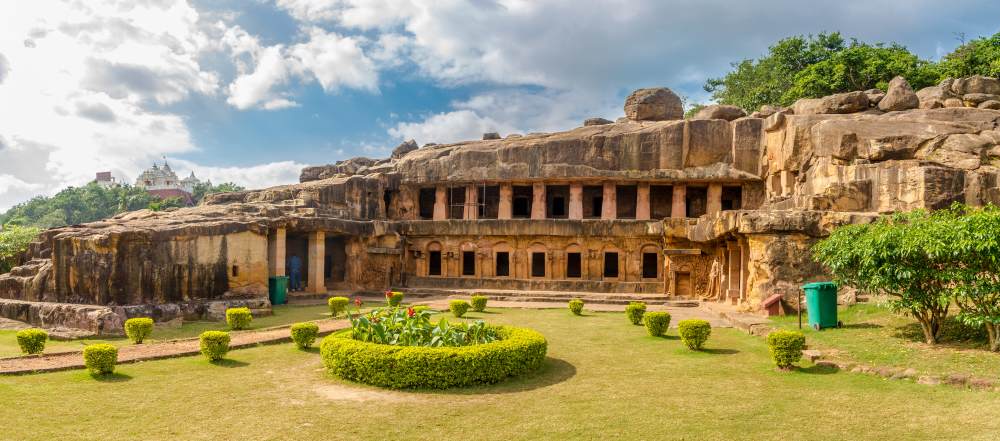
Architecture of Khandagiri and Udayagiri Caves
The caves are a brilliant example of ancient Indian rock-cut architecture, featuring intricately carved facades, pillars, and sculptures.
- Udayagiri Caves: This hill has 18 caves, including Hathigumpha, Rani Gumpha, and Ganesh Gumpha. The Hathigumpha inscription is one of the most important historical records in India. Rani Gumpha, or Queen’s Cave, is a double-storied structure adorned with carvings of royal processions, dancers, and musicians.
- Khandagiri Caves: Khandagiri Hill has 15 caves, including Ananta Gumpha and Navamuni Gumpha, known for their Jain icons and ornamental carvings.
The simplicity of the monks’ chambers contrasts beautifully with the elaborate sculptures depicting gods, goddesses, and celestial beings.
You can check out our Bhubaneswar City Tour Package.
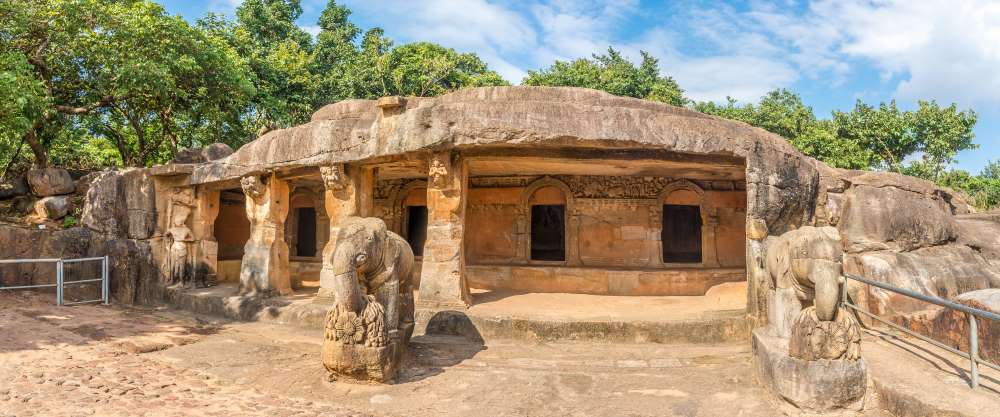
Top Attractions of Khandagiri and Udayagiri Caves
- Rani Gumpha
Rani Gumpha is the largest and most elaborate cave in Udayagiri, renowned for its artistic carvings and spacious chambers. - Hathigumpha Inscription
Found on Udayagiri hill, this 17-line inscription in Brahmi script recounts King Kharavela’s reign and achievements. - Ganesh Gumpha
Famous for its carvings of Lord Ganesh and other motifs, this cave is a spiritual highlight. - Ananta Gumpha
Located on Khandagiri hill, it features carvings of serpents, lotus motifs, and Jain Tirthankaras. - Panoramic Views
The hilltop offers breathtaking views of Bhubaneswar and the surrounding landscape, especially during sunrise and sunset.
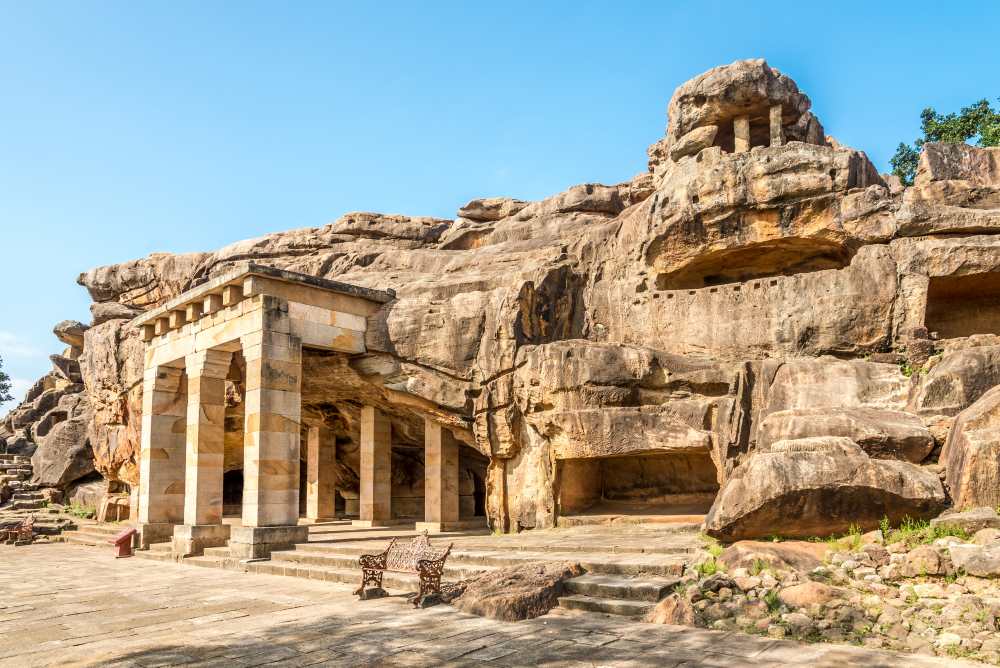
How to Reach Khandagiri and Udayagiri Caves
- By Air: The nearest airport is Biju Patnaik International Airport in Bhubaneswar, about 8 km from the caves.
- By Train: The Bhubaneswar Railway Station is 6 km away, with regular connectivity to major cities.
- By Road: The caves are well-connected by road and are just 7 km from the city center. Auto-rickshaws, taxis, and buses are easily available.
You can check out our Adventure Tour in Odisha.
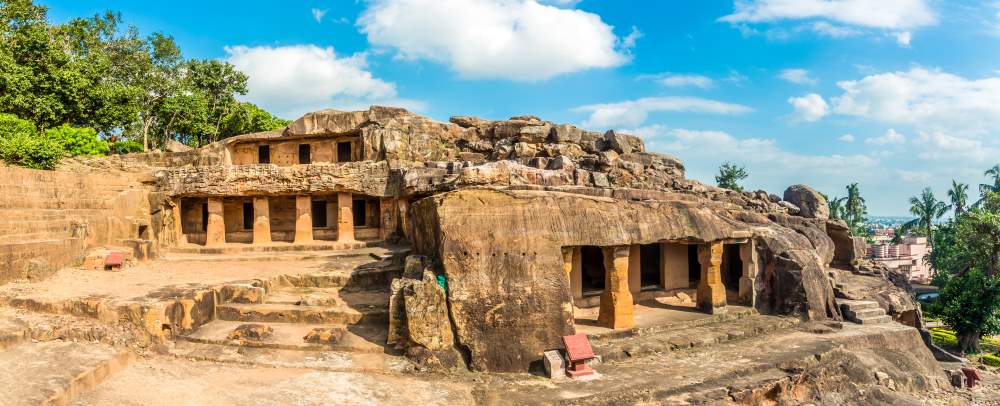
Timings and Entry Fees of Khandagiri and Udayagiri Caves
- Timings: Open daily from 9:00 AM to 6:00 PM.
- Entry Fees:
- Indian citizens: ₹25 per person
- Foreign tourists: ₹300 per person
- Free entry for children below 15 years.
Best Time to Visit Khandagiri and Udayagiri Caves
The ideal time to visit the Khandagiri and Udayagiri Caves is during the winter months, from October to February when the weather is pleasant. Avoid visiting during the summer, as the heat can make the exploration uncomfortable.
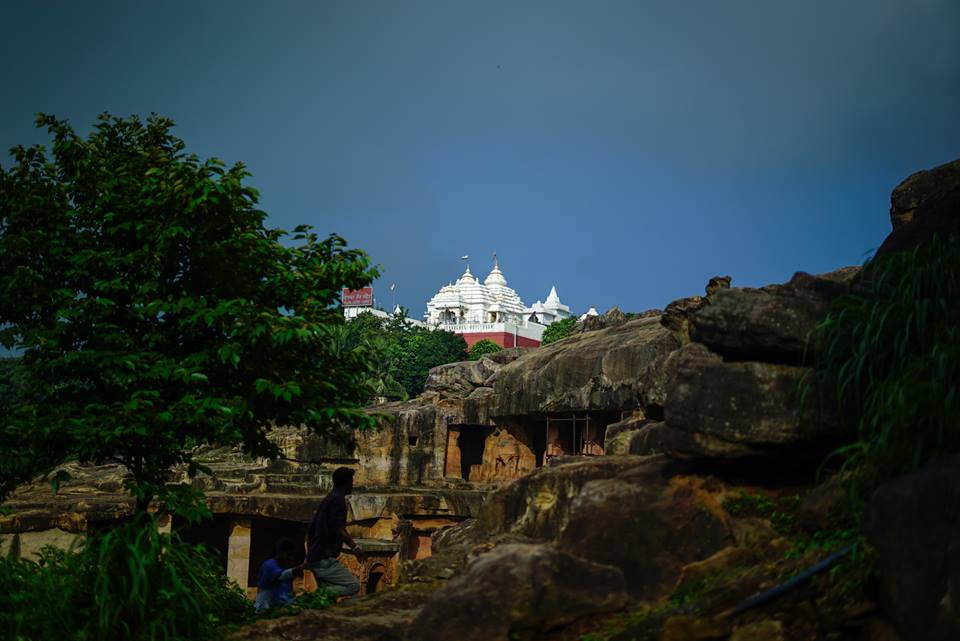
Nearby Attractions of Khandagiri and Udayagiri Caves
- Lingaraj Temple
A magnificent 11th-century temple dedicated to Lord Shiva, located about 6 km from the caves. - Dhauli Shanti Stupa
A peaceful pagoda commemorating Emperor Ashoka’s transformation after the Kalinga War is located 10 km away. - Nandankanan Zoological Park
A popular wildlife park and botanical garden, about 20 km from the caves. - Ekamra Haat
A vibrant market for traditional Odia handicrafts and souvenirs is just 7 km away.
You can check out our Temple Tour in Odisha.
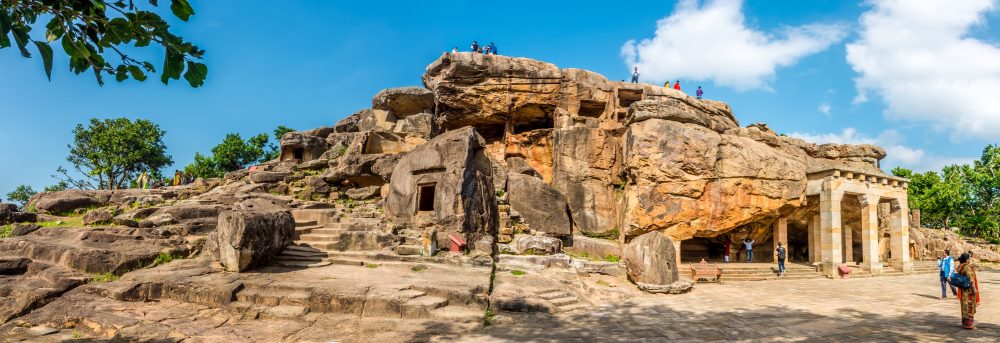
Tips for Visitors of Khandagiri and Udayagiri Caves
- Wear Comfortable Shoes: The caves require some walking and climbing; sturdy shoes are recommended.
- Carry Water and Snacks: Although basic facilities are available, it’s good to have water and light snacks.
- Hire a Guide: To fully appreciate the history and significance of the caves, consider hiring a guide or using an audio guide.
- Respect the Site: Avoid touching or defacing the carvings and maintain cleanliness.
- Visit Early Morning or Late Afternoon: For cooler weather and better lighting for photography.
Conclusion
The Khandagiri and Udayagiri Caves are not just monuments; they are a window into Odisha’s rich historical, cultural, and spiritual legacy. Whether you’re a history enthusiast, an architecture aficionado, or a traveler seeking tranquility, these ancient caves promise an unforgettable experience.
Plan your visit to Bhubaneswar and immerse yourself in the timeless beauty of Khandagiri and Udayagiri!

